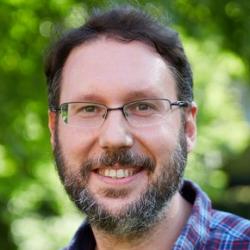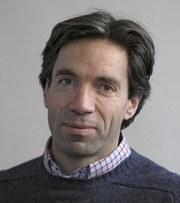Classical Art & Archaeology has a long and distinguished history at Cambridge. Our work is known for its scholarly rigour. But it’s also famous for its innovative, theoretically informed and culturally engaged approaches, in a tradition that stretches back to the ‘Cambridge ritualists’ of the late nineteenth century. What’s special about Classical Archaeology at Cambridge is not just the number of specialists concentrated in one place, remarkable as that is: it’s also the interplay of such diverse interests within a close-knit, welcoming and intellectually inclusive community.
Almost by definition, ‘Classical Art & Archaeology’ is more disparate than other Caucuses within the Cambridge Faculty of Classics. Our research expertise extends to almost every aspect of the ancient material and visual record. It also covers a large geographical, chronological and cultural historical span, from the prehistoric Aegean to late-antique Roman provinces, with an inclination towards global and comparative approaches. Specialist skillsets vary enormously, from the theory and practice of field archaeology to epigraphy, numismatics and the study of ancient imagery and iconography. What unites us – what defines our collective enterprise – is a commitment to studying Classical Art & Archaeology in all its splendid diversity: we respect the need for different areas of specialisation (within the Caucus, as within Classics, and indeed other cognate disciplines), but also strive to forge new and collaborative interconnections between them.
Studying Classical Art & Archaeology at Cambridge
Art & Archaeology is integrated within every part of the Cambridge Classical Tripos: undergraduates have the option of specialising in their final year (Part II); throughout their degree, students also have the opportunity to participate in fieldtrips, site visits and Cambridge-led excavations, often supported by generous Faculty grants. At MPhil. and PhD levels, students work closely with supervisors to develop research topics; again, generous Faculty grants are available to support research activities, fieldwork, site visits, workshops and international conferences.
University resources uniquely enrich our study programmes – not least the proximity of the Fitzwilliam Museum, with its extensive collection of antiquities. Within the Faculty, undergraduates and postgraduates benefit from our unique Museum of Classical Archaeology, with its collection of over 600 plaster casts, 4500 squeezes of ancient inscriptions and 10,000 other objects (mostly from eastern Mediterranean sites like Knossos, Mycenae, Al Mina and Naukratis). They also benefit from the Faculty’s specialist Library (to which graduate students/postdoctoral researchers are given 24-hour access): the fact that the Faculty Library integrates its Art & Archaeology holdings alongside works in other areas helps to explain Cambridge’s extraordinary record of interdisciplinary research.
Art & Archaeology within and beyond the Faculty of Classics
The D Caucus forms its own friendly community within the Faculty: weekly research seminars provide an intellectual and social focus, offering a forum for dynamic debate, discussion and dialogue. Importantly, our work also overlaps with that of other Faculty Caucuses, and many members of ‘D’ also belong to one or more other research groups (including ‘Classical interdisciplinary studies’). Over the last forty years, Cambridge Classical Art & Archaeology has pioneered new and transformative connections across Classics: with ancient Greek and Latin literature (e.g. image and text relations, narrative, ecphrasis, intermediality, histories of landscape, viewing/reading, ‘material’ turn, spatiality of texts); with philosophy (e.g. aesthetics, histories of subjectivity, ontology of objects, sensory history, sight and epistemology); with ancient history (e.g. gender and sexuality, slavery, trade, rural economies, intercultural relations); with linguistics (not least through material cultures of writing); and with classical reception (via the legacy of ancient objects, images and building, but also via histories of collecting, heritage studies and museology). In all these areas, and more, the impact of Cambridge research can be felt the world over.
Our research activities also extend beyond the Faculty. On the one hand, as the profiles below demonstrate, the D Caucus builds important intellectual bridges with other University departments, centres and institutions (e.g. with the Department of Archaeology, Department of Art History, McDonald Institute for Archaeological Research, Fitzwilliam Museum, Cambridge Heritage Research Centre, Centre for Visual Culture and Ax:son Johnson Centre for the Study of Classical Architecture). On the other hand, our collaborations reach far beyond Cambridge, including partnerships with multiple British and international museums/archaeological institutions, not least the British School at Rome and British School at Athens. Recent and current research/impact initiatives include the following major funded projects: Impact of the Ancient City, Interamna Lirenas (in turn associated with Beneath the Surface of Roman Republican Cities), Middle Bronze Age Lerna, Mathematics for Applications in Cultural Heritage, Aldborough Roman Town and (from 2021–2024) Roman York beneath the Streets.
Who we are
Our research community is at once diverse and inclusive: Caucus members range from postdoctoral researchers and ‘Junior Research Fellows’ early in their professional academic careers to retired University teachers (many of whom maintain close links with the Faculty: e.g. Mary Beard, Henry Hurst, Martin Millett, Anthony Snodgrass and Andrew Wallace-Hadrill). The Faculty is also home to the Laurence Professorship of Classical Archaeology: past holders have included Alan Wace, Jocelyn Toynbee, Robert Cook, Anthony Snodgrass and Martin Millett. University staff welcome enquiries from prospective graduates, postdoctoral researchers and academic visitors: email is the most effective means to get in touch.
































